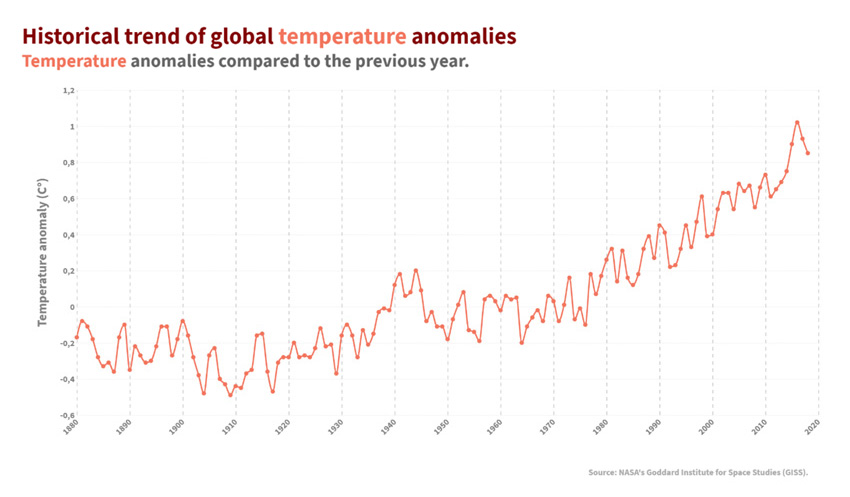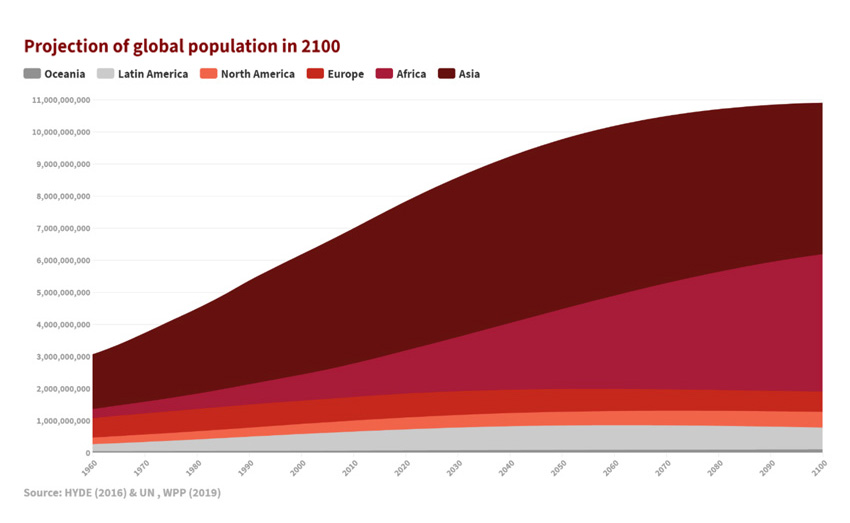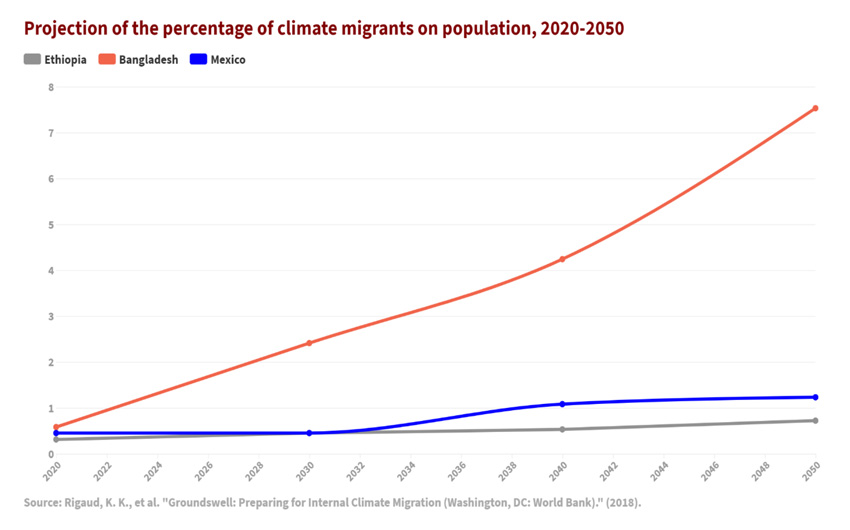16 October 2019
Migrating because of climate
Reasons and perspectives of the migratory phenomenon
Migrations due to climate change have been taking place already for several years, but have occupied little space in the public debate with respect to migration for economic or humanitarian reasons.
However, the effects should not be ignored. In fact, the increase in global temperature is causing sea levels to rise and increasingly frequent and violent storm surges, inevitably affecting the availability of drinking water and water for agricultural use. Populations in the areas afflicted by this scarcity are forced to relocate under increasingly difficult circumstances.
Thus, the data on the planet’s increasing temperature paints a picture of profound climate changes, which as a result, are reflected in our lives and habits.

According to the glossary of the International Organization for Migration (IOM), climate migrants are defined as:
“Persons or groups of persons who, predominantly for reasons of sudden or progressive changes in the environment that adversely affect their lives or living conditions, are forced to leave their homes, or choose to do so, either temporarily or permanently, moving within their country of origin or abroad.”
However, the first distinguishing characteristic with respect to “traditional” migration emerges: climate migration is primarily internal. When migration is internal, people who relocate are the responsibility of their own government, they do not cross borders and do not seek protection from a third country or internationally. It is therefore much more difficult to define the flows and remediation strategies.
However, the issue is complex and not easily defined: it is difficult to isolate environmental or climatic reasons, in particular from humanitarian, political, social, war-related, or economic ones.

There are three regions of the planet most affected by the phenomenon: Sub-Saharan Africa, South Asia and Latin America, which today represent 55% of the population of developing countries. By 2050, climate change will be responsible for the internal displacement of millions of people, around 143 million according to World Bank estimates, equal to 2.8% of the population of these regions. The slow nature of climate change will lead to equally slow migrations, so there will be no immediate shock effect, but rather problems that increase over the course of years.
The poorest and most climatically vulnerable areas will be those most severely affected. Many urban and peri-urban areas will have to prepare for a heavy influx of people, including by improving housing and transportation infrastructures, social services and job opportunities.
Policy makers can prepare by ensuring flexible social protection services and including migrants in planning and decision-making. If the migration process is well managed, it can create a positive momentum, especially in urban areas.
There are several examples of successful local adaptation strategies: investments in smart climate infrastructure, diversification of income-generating activities, and development of more responsive financial protection systems for vulnerable groups. Poverty reduction and social protection programs targeting rural areas can help increase the ability to adapt to climate change, potentially reducing the need for people to undertake difficult relocations.
To understand the impact of the phenomenon in various countries, the World Bank study used as a reference three countries, which, due to their geographical location and their morphological and climatic characteristics, will most likely be subject to the largest climate migrations: Mexico, Bangladesh and Ethiopia.

The data reveals a scenario that is not exactly positive, given the challenges that the governments of these countries must face in the future.
Internal migration for climate reasons will be a reality, but it does not have to become a crisis if concerted and targeted measures are taken to better anticipate and prepare for its likely effects and exploit its potential. It is important to stress that the political decisions taken today determine the extent to which the effects of climate change will be positive for migrants and their families.
Inaction means losing an important opportunity, the opportunity to appropriately reconfigure where, when and how public investments are allocated.

